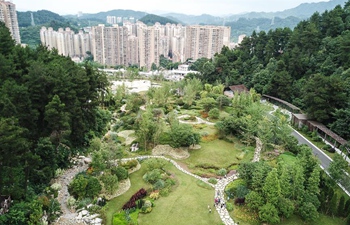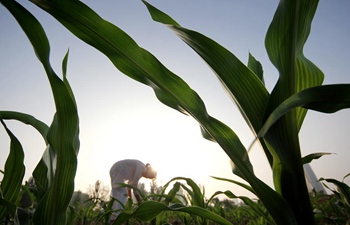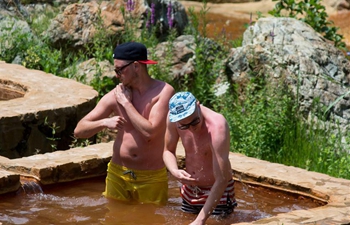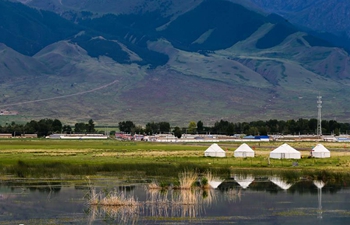ANKARA, July 7 (Xinhua) -- The Turkish archeological site of Gobeklitepe, which has been added to the UNESCO's World Heritage List, is awaiting people from all over the world to come and discover the world's oldest temple.
Regarded as the "ground zero for human history," Gobeklitepe, which means Potbelly Hill in Turkish, is the world's oldest known megalithic structure in Upper Mesopotamia.
Dating back to roughly 12,000 years ago, the site is considered the world's oldest temple. It is also among the oldest archaeological ruins in the world, featuring massive carved stones and T-shaped pillars that predate the arrival of agriculture.
The site, located in Turkey's southeastern province of Sanliurfa, was recently reopened to tourists following extensive restoration work. A 4,000-square-meter steel roof was erected for its protection.
Turkish President Recep Tayyip Erdogan is set to attend in the near future a ceremony to celebrate the inclusion of the site in the UNESCO list.
"We will organize a magnificent ceremony in Gobeklitepe with the participation of President Erdogan," Sanliurfa's Mayor Nihat Ciftci told reporters, quoted by state-run Anadolu Agency.
The local official emphasized the importance of the decision for tourism in the region which took a hard blow because of the Syrian war and the resulting refugee crisis.
Sanliurfa is located in southeastern Turkey, near the Syrian border and foreign tourists have avoided this conflict zones for years.
"Gobeklitepe will be flooded with domestic and foreign visitors after it was included in the UNESCO list," said the mayor of the city, which is also known to be a historical one dating back to the prophet Abraham, venerated by Christians, Muslims and Jews.
Klaus Schmidt, a German archaeologist and pre-historian, led the wide-ranging excavations at Gobeklitepe from 1996 until his death in 2014, contributing through his research much to the rewriting of the early history of civilization.
People first came to this site some 12,000 years ago and men and women, who lived there as hunters and gatherers, achieved a great deal with very little. Without metal tools, the skilled artisans of Gobeklitepe carved T-shaped pillars from local limestone.
These pillars, some of which are up to 5.5 meters high and weigh several tons, were transported from the nearby quarry to the site, where the locals shaped them into round-oval, semi-subterranean stone buildings.
The Neolithic art includes sculptures of fox, crane, boar and scorpions. Scientists even believe that the structure, older than the Egyptian pyramids or Stonehenge, is the spot where modern human civilization began.
"The site contains monumental circular and rectangular megalithic structures, interpreted as enclosures, which were erected by hunter-gatherers in the Pre-Pottery Neolithic age between 9,600 BC and 8,200 BC," UNESCO said in a statement.
"It is likely that monuments here were used in connection with rituals, probably of a funerary nature," it added.
The Gobeklitepe research team, who worked intensely for more than two decades, also released a statement saying it "represents a masterpiece of human creative genius."
"Gobeklitepe is an outstanding example of a type of building, architectural or technological ensemble or landscape which illustrates a significant stage in human history," it added.
Gobeklitepe is located at the northern edge of the Fertile Crescent, an area often described as the "Cradle of Civilization" that covers the Middle East from the Gulf to Lebanon, Israel, Jordan and Egypt.
Meanwhile, experts warn that once a site is registered in the World Heritage List, it also brings its share of burdens and risks because of significantly increasing visitors, which often means degradations.
"These sites come under heavy pressure of high number of visitors and protection measures become gradually insufficient. This is not only the case of Gobeklitepe but other sites as well in the world," Necmi Karul, a member of the scientific board of Gobeklitepe, told Xinhua.
"We all have a responsibility in preserving this site and its surroundings," said the archeologist, pointing out that local administrators are also aware of the need to safeguard it from excessive visitors in a foreseeable future.

















